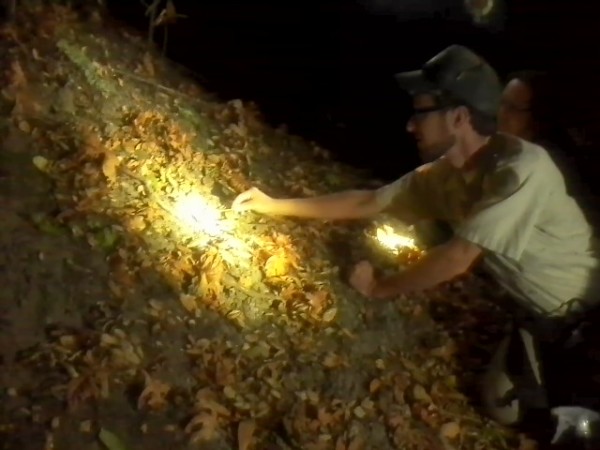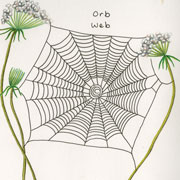Q: I was watching a spider outside (I called her Charlotte) and I saw her make two egg sacs but now she’s gone. What has happened to her? Should I protect her egg sacs? Fall is here and we get lots of rain in South Carolina. — Linda Garza
A: Hi Linda,
This is a question of interest to me also, for it is frequently asked on my guided spider programs. “Where do spiders go in the winter?” does not have one simple answer, but depends on several factors – the species in question, local climate, and habitat.

In coastal California, one of our most common backyard spiders is Araneus diadematus, the European cross orb-weaver. A relative newcomer to the Golden State, the cross orb-weaver has wasted no time in finding its niche in California’s climate and geography. These spiders are commonly seen in the fall, when they hang conspicuously in their large orb webs.
Mature females can mate at any time, and will store the male’s sperm until they are ready to lay their eggs – typically late fall, preceding the winter rains. The egg sac is constructed in a location where it can safely survive the winter, and the eggs are fertilized as they are laid. After creating and fertilizing her eggs, the female dies. The eggs will stay tucked away until spring weather arrives, signaling the availability of food for the young spiderlings. This annual life cycle is a common strategy for orb-weavers in temperate climates.
As for your Charlotte: If she was an orb-weaver, chances are that once she produced her future progeny she went on to that great orb web in the sky. Hopefully, instinct told her to place the egg sacs out of harm’s way, safe from marauding birds and Southeastern thunderstorms. If so, her spiderlings will hatch in the coming spring, spilling out of their egg sacs and ballooning away to their future homes.
If you believe the egg sacs are in a location that won’t weather the winter, you could potentially move them – however you risk damaging the eggs in the process. You might consider observing them in situ, and letting nature take its course. After all, who better knows how to protect her young than a mother?
— Trent Pearce, Naturalist, East Bay Regional Park District, Berkeley, CA

The Bay Nature Guide To Webs and Spidering
Spider webs can be found in almost every imaginable place — even underwater — and have allowed spiders to populate every continent except frigid Antarctica. Want to find them for yourself? Check out Bay Nature’s guide to spidering, with an illustrated guide to the five most basic forms of spider web.






